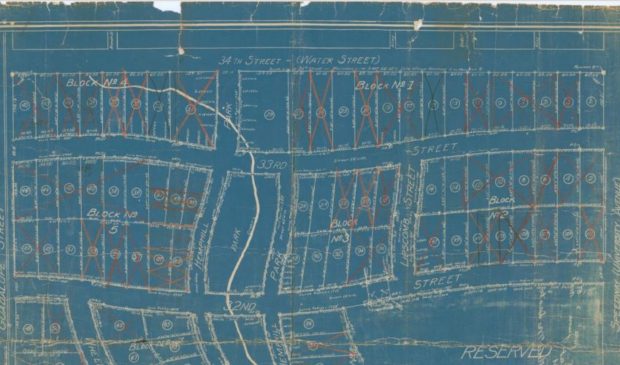Austin’s new historic district: Aldridge Place
Tuesday, April 4, 2017 by
Elizabeth Pagano It’s been a long time coming, but City Council approved the Aldridge Place Local Historic District last week, making it the fourth such district in the city.
Council members approved the district in a vote of 8-3 with Council members Jimmy Flannigan, Greg Casar and Ellen Troxclair voting in opposition. The newly created district is bounded by Guadalupe Street on the west, Speedway on the east, 30th Street on the south and 34th Street on the north. It consists of 159 resources buildings, 141 of which are contributing to the historic district. Seventy-five percent of the property owners in the district supported its creation.
According to the staff report, “Although platted in 1912, development began in earnest in the late 1910s and early 1920s, and continued steadily until the beginning of World War II. Many of the homes in Aldridge Place were designed by prominent local architects, including Hugo Kuehne, Roy L. Thomas, and Edwin C. Kreisle. The neighborhood has long attracted university professors and administrators, local and state political figures, lawyers and judges, and business people, including a woman who ran one of Austin’s largest printing companies from the 1930s until her retirement 30 years later.”
Local historic districts are one of the few ways that the city can prevent demolitions of buildings and exert control over the appearance of new construction. How this would manifest in a central neighborhood appeared to concern the Council members who voted against the district.
Casar, who questioned how a historic district could impact future development in the area, said he appreciated the work the neighborhood had done to make sure that accessory dwelling units – or small second homes on lots – were allowed within the district. Casar said he would be more comfortable approving the district on first reading in order to allow more time to discuss the design standards for the district.
Aldridge Place resident Steven Tomlinson told Council that the neighborhood had no intention of using the district to prevent development and, in fact, were hoping to be “dense, affordable and historic.”
“We have already said let’s allow more garage apartments, more (accessory dwelling units) as a way of letting more people into our neighborhood. We’re responding to the economic reality because we know that no ordinance is gonna protect, you know, anything forever. … The (local historic district) is the – it’s the foundation, the starting point, but just as we allowed (accessory dwelling units), we would imagine that people who are concerned about the possibility of row houses and other things would be coming to us, saying can we create that within this framework, too?” he said. “And our neighborhood has been very reasonable in the past with anything that protects our historic character to accomplish other goals, like density and affordability.”
Flannigan said he was “guided by the housing crisis we are facing in this city” and, though he appreciated the neighborhood’s efforts to accommodate housing, he was still concerned about creating an ever-expanding Hyde Park Historic District so close to the university.
However, the majority of Council, including Mayor Pro Tem Kathie Tovo, voted to create the district on all three readings. Tovo noted it had been in process since 2014 and involved extensive outreach to the community.
“As a city we have supported local historic districts,” Tovo said. “Those who have participated in (creating them) have reported that it is difficult, it is onerous. We should probably look at ways of enhancing and supporting those neighbors who undertake it because it is a huge effort, and this is just a shining example of a community that has spent years working on this designation.
“We have a very, very high degree of approval on this local historic district, and, you know, this is maybe the very highest percentage we will ever see for a local historic district,” she continued. “We have a lot of decisions ahead of us with regard to CodeNEXT and the future of this city, but we must preserve the places and the neighborhoods and the communities that have drawn people to the city of Austin, both as residents and as visitors.”
The Austin Monitor’s work is made possible by donations from the community. Though our reporting covers donors from time to time, we are careful to keep business and editorial efforts separate while maintaining transparency. A complete list of donors is available here, and our code of ethics is explained here.
You're a community leader
And we’re honored you look to us for serious, in-depth news. You know a strong community needs local and dedicated watchdog reporting. We’re here for you and that won’t change. Now will you take the powerful next step and support our nonprofit news organization?








